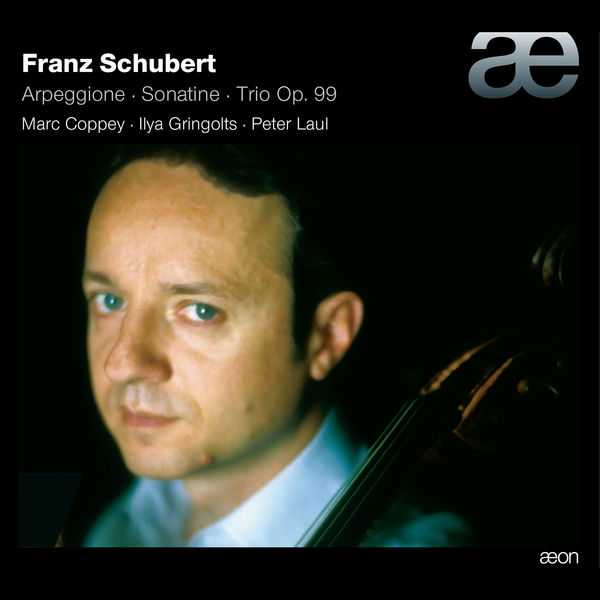
Composer: Franz Peter Schubert
Performer: Marc Coppey, Ilya Gringolts, Peter Laul
Format: FLAC (tracks)
Label: Aeon
Catalogue: AECD1095
Release: 2011
Size: 306 MB
Recovery: +3%
Scan: cover
Sonata in A minor ‘Arpeggione’, D821
01. Allegro moderato
02. Adagio
03. Allegretto
Sonata (Sonatina) for violin & piano in D major, D384 (Op. posth. 137 No. 1)
04. Allegro molto
05. Andante
06. Allegro vivace
Piano Trio No. 1 in B flat major, D898
07. Allegro moderato
08. Andante un poco mosso
09. Scherzo-Allegro
10. Rondo-Allegro vivace
It’s not entirely clear what French cellist Marc Coppey intends with this rather odd program of Schubert pieces, and the talky booklet notes, in interview format (they are given in French and English), do little to illuminate the question. Coppey speaks of exploring Schubert’s relationship with the cello, although Schubert wrote nothing for the instrument in a solo capacity; it’s hard to see how the Sonatina No. 1 in D major, D. 384, originally for violin and piano, could help in this enterprise. The Sonata for arpeggione and piano in A minor, D. 821, is, it’s true, generally performed on the cello, but the work tells you nothing about Schubert’s attitude toward an instrument for which the work is not intended. It’s odd that the historical performance movement has not demanded more performances of this work in its original form; arpeggiones are rare, but they do exist, and they do not sound precisely like a cello or a viola. At any rate, taken as a recital of three discrete Schubert works, the album is quite strong. Coppey leans toward the Beethovenian tendency in Schubert, avoiding the technique of reasoning backward from the middle of the Romantic period to give Schubert’s melodies either a deep inwardness or a kind of false Viennese Gemütlichkeit. The reading of the Piano Trio No. 1 in B flat major, Op. 99, is brisk, with two other fine young chamber players, is full of forward motion, and a bit nervous. Throughout, Coppey pushes the music in the direction of virtuosity, not slackening the pace or the texture when music doesn’t lie easily under his fingers or those of his comrades, and in so doing he forges an unusual interpretation of this familiar work. The “Arpeggione” Sonata has a driven, grand Beethovenian flavor, with the little Sonatina as a sort of intermission between the two works. Fine sound from France’s Aeon label, recorded in a small auditorium, enhances a recording that works well as a general Schubert recital.